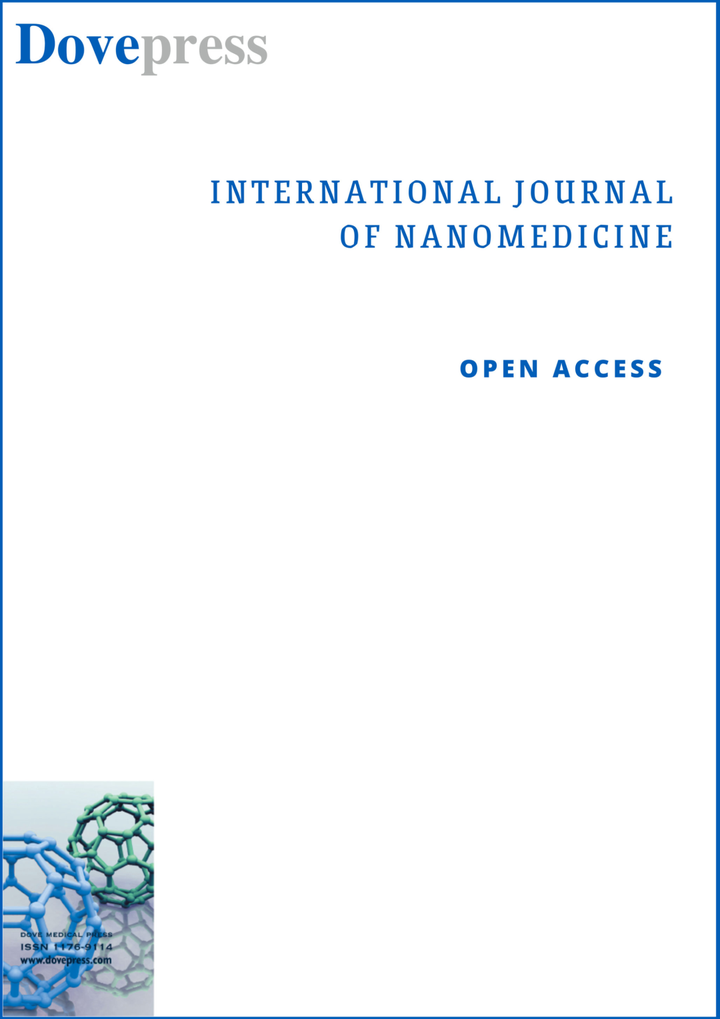有效进行视网膜下注射的纳米载体有多先进?
IF 6.6
2区 医学
Q1 NANOSCIENCE & NANOTECHNOLOGY
引用次数: 0
摘要
摘要视网膜下注射(SR)是一种常用的眼部给药方法,主要用于治疗新生血管性年龄相关性黄斑变性(nAMD)和由nAMD引起的黄斑下出血(SMH),以及各种遗传性视网膜病变(IRD),如Stargardt病(STGD)和视网膜色素变性(RP)、以及各种遗传性视网膜病变(IRD),如斯塔加特病(STGD)、视网膜色素变性(RP)和一系列眼底疾病,如勒伯氏先天性黑朦(LCA)、脉络膜缺损等。常用的 SR 注射载体主要分为病毒载体和非病毒载体。勒伯氏先天性无眼球症(LCA)、脉络膜缺损和其他一系列眼底疾病也通常使用 SR 注射治疗。SR 注射常用的载体分为两类:病毒载体和非病毒载体。病毒载体是一类传统的SR注射药物载体,在临床治疗中得到了广泛的研究,但其仍存在许多不容忽视的局限性,如繁殖效率低、载入基因小、引发免疫反应等。随着纳米技术在眼科疾病治疗领域的快速发展,纳米载体已成为非病毒载体领域的研究热点。纳米载体具有许多诱人的特性,如免疫原性低、负载能力强、结构稳定、易于修饰等。这些宝贵的特性意味着更高的安全性、更好的疗效、更长的持续时间和更灵活的适应症。近年来,人们对纳米载体的兴趣与日俱增,使眼科疾病的治疗取得了重大进展。纳米载体不仅成功解决了病毒载体未能解决的临床问题,还为某些传统疾病类型带来了新的治疗可能性。与病毒载体相比,纳米载体具有不可否认的优势。本综述讨论了视网膜下注射(SR)的优势、研究现状以及病毒载体基因治疗的研究热点。综述重点介绍了纳米载体在视网膜下注射中的最新进展,并列举了纳米载体在治疗眼底病变中的局限性和未来前景。此外,这篇综述还涵盖了纳米载体在视网膜下注射领域的研究进展,并强调了纳米载体介导的SR注射在治疗眼底病变方面的价值。关键词:纳米颗粒;视网膜下注射;药物输送;非病毒载体;纳米医学;基因治疗本文章由计算机程序翻译,如有差异,请以英文原文为准。
How Advanced are Nanocarriers for Effective Subretinal Injection?
Abstract: Subretinal injection (SR injection) is a commonly used method of ocular drug delivery and has been mainly applied for the treatment of neovascular age-associated macular degeneration (nAMD) and sub-macular hemorrhage (SMH) caused by nAMD, as well as various types of hereditary retinopathies (IRD) such as Stargardt’s disease (STGD), retinitis pigmentosa (RP), and a series of fundus diseases such as Leber’s congenital dark haze (LCA), choroidal defects, etc. The commonly used carriers of SR injection are mainly divided into viral and non-viral vectors. Leber’s congenital amaurosis (LCA), choroidal agenesis, and a series of other fundus diseases are also commonly treated using SR injection. The commonly used vectors for SR injection are divided into two categories: viral vectors and non-viral vectors. Viral vectors are a traditional class of SR injection drug carriers that have been extensively studied in clinical treatment, but they still have many limitations that cannot be ignored, such as poor reproduction efficiency, small loading genes, and triggering of immune reactions. With the rapid development of nanotechnology in the treatment of ocular diseases, nanovectors have become a research hotspot in the field of non-viral vectors. Nanocarriers have numerous attractive properties such as low immunogenicity, robust loading capacity, stable structure, and easy modification. These valuable features imply greater safety, improved therapeutic efficacy, longer duration, and more flexible indications. In recent years, there has been a growing interest in nanocarriers, which has led to significant advancements in the treatment of ocular diseases. Nanocarriers have not only successfully addressed clinical problems that viral vectors have failed to overcome but have also introduced new therapeutic possibilities for certain classical disease types. Nanocarriers offer undeniable advantages over viral vectors. This review discusses the advantages of subretinal (SR) injection, the current status of research, and the research hotspots of gene therapy with viral vectors. It focuses on the latest progress of nanocarriers in SR injection and enumerates the limitations and future perspectives of nanocarriers in the treatment of fundus lesions. Furthermore, this review also covers the research progress of nanocarriers in the field of subretinal injection and highlights the value of nanocarrier-mediated SR injection in the treatment of fundus disorders. Overall, it provides a theoretical basis for the application of nanocarriers in SR injection.
Keywords: nanoparticles, subretinal injection, drug delivery, non-viral vectors, nanomedicine, gene therapy
Keywords: nanoparticles, subretinal injection, drug delivery, non-viral vectors, nanomedicine, gene therapy
求助全文
通过发布文献求助,成功后即可免费获取论文全文。
去求助
来源期刊

International Journal of Nanomedicine
NANOSCIENCE & NANOTECHNOLOGY-PHARMACOLOGY & PHARMACY
CiteScore
14.40
自引率
3.80%
发文量
511
审稿时长
1.4 months
期刊介绍:
The International Journal of Nanomedicine is a globally recognized journal that focuses on the applications of nanotechnology in the biomedical field. It is a peer-reviewed and open-access publication that covers diverse aspects of this rapidly evolving research area.
With its strong emphasis on the clinical potential of nanoparticles in disease diagnostics, prevention, and treatment, the journal aims to showcase cutting-edge research and development in the field.
Starting from now, the International Journal of Nanomedicine will not accept meta-analyses for publication.
 求助内容:
求助内容: 应助结果提醒方式:
应助结果提醒方式:


